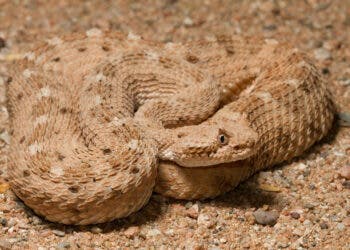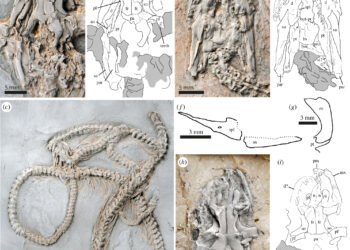
You’d think that a limbless creature would be a poor climber. But what they may lack in hands, digits, and claws, invasive brown tree snakes in Guam more than compensate for with creativity and technique. In a new study, shocked researchers document a new mode of snake locomotion, a lasso-like movement for climbing up smooth vertical cylinders. The flabbergasting account may have important implications for the conservation of the few remaining birds native to Guam.
“Martin Kastner, a CSU biologist, and I had watched about four hours of video [see below] and then all of a sudden, we saw this snake form what looked like a lasso around the cylinder and wiggle its body up. We watched that part of the video about 15 times. It was a shocker. Nothing I’d ever seen compares to it,” Thomas Seibert, a researcher at Colorado State University (CSU) and co-author of the new study, said in a statement.
Snakes move about using four modes of locomotion, known as rectilinear, lateral undulation, sidewinding, and concertina modes. The newly identified lasso-like locomotion is thus the fifth mode of locomotion seen in a snake species in over a hundred years — and it was discovered completely by accident.
In the 1940s, brown tree snakes (Boiga irregularis) were introduced by humans to Guam. Not long after, native bird populations were decimated. Today, only two native species remain, Micronesian starlings and another cave-nesting bird, both found in very small numbers.
Julie Savidge of Colorado State University was working on a conservation project designed to protect the nests of Micronesia starlings, which also involved implementing barriers against tree snakes. To keep the snakes out of bird boxes, the researchers used a three-foot-long metal baffle, which was previously used to keep raccoons away from nest boxes in the yards of birdwatchers. This worked well enough — until it didn’t.
Savidge and her colleagues were baffled when they saw persistent brown tree snakes latch onto the baffle’s cylinder by coiling around it, before proceeding to climb the cylinder.
When climbing trees, snakes typically employ a concertina motion, bending sideways to grip smooth branches in two places. The lasso locomotion is different, though. By forming a “lasso”, the snakes make contact with a single gripping region. The snakes then advance vertically by slowly shifting the location of little bends within the loop of the lasso.
All of this motion, however, is very technical, challenging, and highly taxing for the snakes, which often slip, stop to rest, and breathe heavily.
“Even though they can climb using this mode, it is pushing them to the limits,” said co-senior author Bruce Jayne of the University of Cincinnati.
Understanding how tree snakes find their way around barriers is critical to bird conservation in Guam and elsewhere in the world. The researchers are now designing a baffle that brown tree snakes can’t traverse.
The findings appeared in the journal Current Biology.






